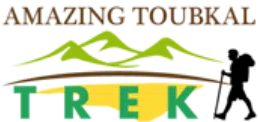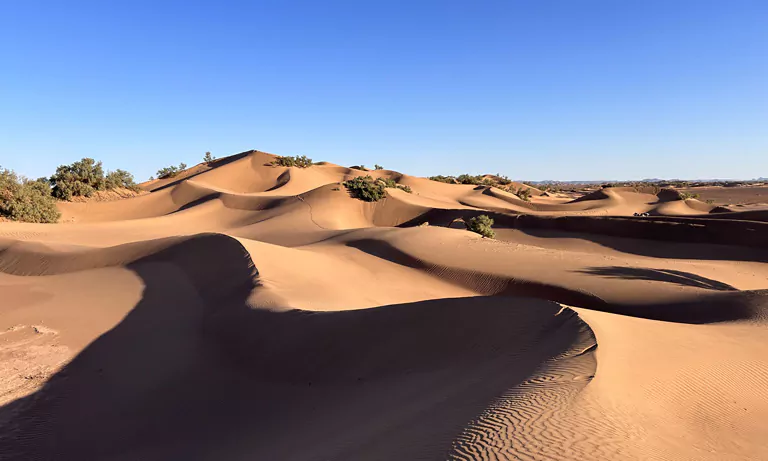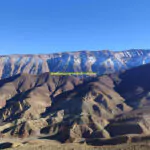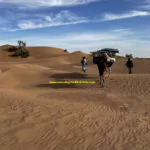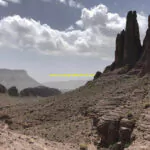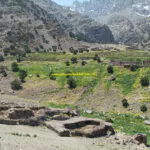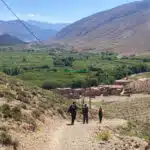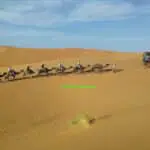Exploring the Sahara: Camel Trekking and Hiking Near Mhamid El Ghizlane For those seeking an authentic and immersive desert experience, Mhamid El Ghizlane offers the perfect gateway to the Moroccan Sahara. Nestled at the edge of the desert, this small oasis town marks the end of the road before the vast expanse of dunes, palm groves, and rocky desert landscapes begins. Trekking and hiking around Mhamid El Ghizlane is an experience like no other. It combines the thrill of desert adventure with the serenity of nature, cultural encounters, and breathtaking scenery.
Why Choose Mhamid El Ghizlane for Your Desert Trek?
Mhamid El Ghizlane, often overshadowed by more famous desert destinations like Merzouga, provides a more peaceful and off-the-beaten-path alternative. The town is a historic starting point for ancient caravan routes that crossed the Sahara. Today, it retains its charm as a quiet desert town where you can begin your adventure into the vast, untouched beauty of the Sahara.
Types of Desert Treks Near Mhamid El Ghizlane
1. Camel Trekking Adventures
Camel trekking is one of the most iconic ways to explore the Sahara. Riding a camel, you’ll feel a strong connection to the desert’s history, as caravans once crossed these very routes. Treks typically range from half-day excursions to multi-day adventures deep into the desert.
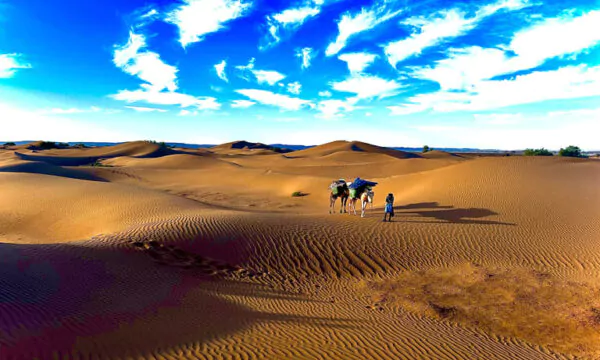
• Day Camel Treks: A shorter option, ideal for travelers looking to experience the beauty of the dunes without committing to an overnight stay. You’ll traverse the dunes and rocky desert, visiting palm oases and enjoying a traditional Berber meal before returning to Mhamid.
• Overnight Camel Treks: For a more immersive experience, join an overnight trek that takes you to remote desert camps. After a day of riding, you’ll set up camp beneath the stars and enjoy the peace and stillness of the desert night.
• Multi-day Camel Treks: For the ultimate desert adventure, opt for a multi-day trek that takes you deep into the Sahara. You will reach the majestic Erg Chigaga dunes—the largest dunes in Morocco. These treks offer the chance to disconnect entirely and experience the raw, untouched beauty of the Sahara.
2. Hiking in the Sahara
While camels are the traditional means of transport, hiking in the Sahara allows for a more intimate connection with the landscape. Trekking on foot, you’ll feel the crunch of sand beneath your feet, the warmth of the desert sun, and the stillness of the open spaces.
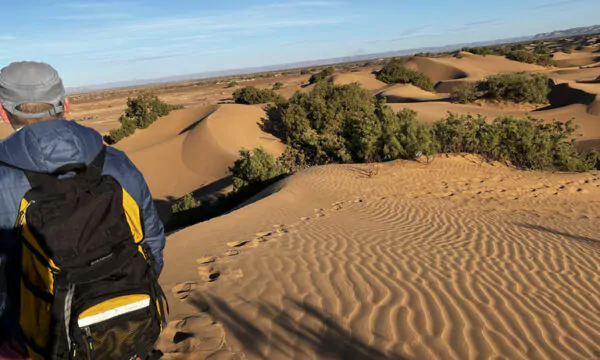
• Draa Valley Hikes: The Draa Valley, which stretches along the Draa River from the Atlas Mountains to the desert, is known for its verdant palm groves, ancient kasbahs, and oases. Hiking in this area combines desert scenery with cultural immersion. You will pass through small Berber villages and palm plantations.
• Erg Lihoudi Dunes: These smaller dunes, located near Mhamid, are perfect for a half-day hike. They offer stunning views of the desert, with fewer crowds than other popular dune locations.
• Erg Chigaga Hiking: For seasoned hikers, trekking to the Erg Chigaga dunes is a challenge worth taking. The hike takes you through ever-changing desert landscapes. These range from rocky plateaus to soft sand dunes, culminating in the towering Chigaga dunes.
What to Expect on a Sahara Desert Trek
• Stunning Landscapes: The Sahara is much more than just sand dunes. Near Mhamid, you’ll encounter a variety of landscapes, including rocky desert (hammada), salt flats, and lush oases, each offering a different kind of beauty.
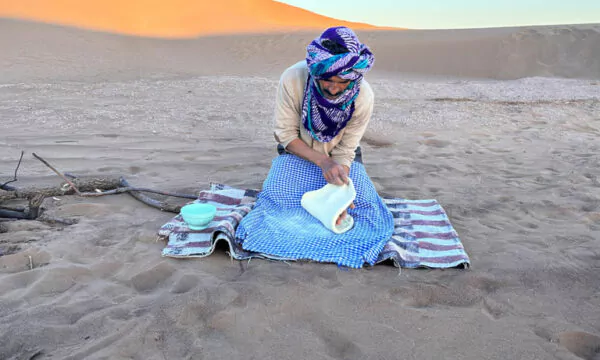
• Berber Culture: The local Berber people have lived in the desert for centuries. Your trek will likely be guided by a Berber guide who will share insights into their culture and way of life. You may also have the opportunity to visit traditional Berber camps and enjoy their warm hospitality.
• Desert Camps: One of the highlights of a Sahara trek is spending the night in a desert camp. These camps range from basic to luxurious. All offer the chance to experience the magic of a desert sunset and the clear night sky, far from any light pollution.
• Wildlife: While the desert may seem barren, it is home to a surprising array of wildlife, including fennec foxes, desert birds, and various reptiles. Keep an eye out for tracks in the sand during your trek.
• Sunrise and Sunset Views: The desert is most magical during the early morning and late evening. The low sun casts long shadows and turns the dunes into shades of gold and orange. Be sure to catch both a sunrise and a sunset during your trek.
Practical Tips for Your Sahara Trek
• Best Time to Visit: The ideal time for trekking in the Sahara is during the cooler months, from October to April. Summer months (June to August) can be extremely hot, making daytime treks challenging.
• What to Pack: Comfortable, loose-fitting clothing, a wide-brimmed hat, sunscreen, sunglasses, and sturdy walking shoes are essential for desert trekking. Don’t forget a scarf to protect yourself from sand and wind. For overnight treks, bring a sleeping bag and warm layers for the cooler nights.
• Fitness Level: While camel trekking requires little physical exertion, hiking in the desert can be physically demanding, especially in the heat and soft sand. Make sure to choose a trek that suits your fitness level. Be prepared for varying terrain.
• Guided Tours: It’s highly recommended to hire a local guide for your trek. Not only will they ensure your safety in the vast desert, but they will also share their knowledge of the local environment, wildlife, and Berber culture.
Conclusion
A trek near Mhamid El Ghizlane is a journey into one of the most awe-inspiring landscapes on Earth. Whether you choose to ride camels, hike through the dunes, or explore the Draa Valley, you’ll find a profound sense of peace and connection to nature in the Sahara Desert. This is an adventure that goes beyond the physical. It’s an experience that will leave you with lasting memories of Morocco’s vast and mysterious desert. Embark on your Sahara adventure today and discover the magic of Mhamid El Ghizlane and the Draa Valley!
Follow us on Facebook and Instagram!
